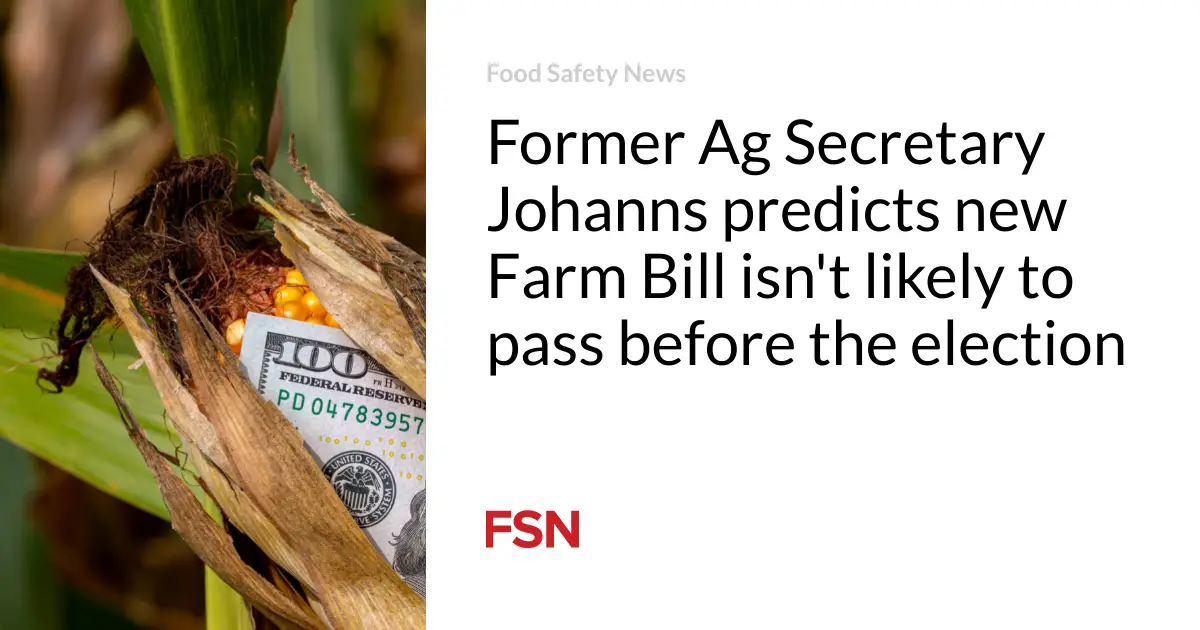
The former Governor of Nebraska, who served as Secretary of Agriculture under President George W. Bush, is still making predictions. Mike Johanns does not think the prospects for a new Farm Bill are good.
Appearing at the recent Indiana Ag Policy Summit, hosted by the Indiana Soybean Alliance and the Indiana Corn Growers Association, Johanns, with Congress taking its summer recess, not much time remains on the clock.
‘If you look at the number of days available, assuming they come back on Sept. 9, you’ve got about 15 days on the schedule,” Johanns said. “If I were to guess because the White House is up, the entire House is up, a third of the Senate is up, and it’s a coin toss for who’s going to be in control — you won’t see 15 days.”
The deadline for a new Farm Bill is in September. The 2018 Farm Bill was already extended by a year, so a new Version is required before the 2018 version expires.
Led by Chairman G.T. Thompson, the House Agriculture Committee successfully marked up a bipartisan farm bill in May that modernizes risk management tools for farmers. The Senate, however, has not taken up the issue since then, and time is running out.
The American Farm Bureau recently rallied more than 500 groups representing various agricultural interests and beyond. They sent a unified message to House and Senate leadership with a letter calling on Congress to pass a farm bill this year.
Hundreds of agriculture groups, some with differing farm bill priorities, are working together to demonstrate the urgency and importance of passing a new bill before the legislation expires.
The current Farm Bill has 12 parts, referred to as Titles.
Title 1: Commodities. The Commodities title covers price and income support for farmers who raise widely produced and traded non-perishable crops like corn, soybeans, wheat, rice, dairy, and sugar. It also includes agricultural disaster assistance.
Title 2: Conservation. The Conservation title covers programs that help farmers implement natural resource conservation efforts on working lands like pasture and cropland and land retirement and easement programs.
Title 3: Trade. The Trade title covers food export subsidy programs and international food aid programs.
Title 4: Nutrition. The Nutrition title covers the Supplemental Nutrition Assistance Program [SNAP] (formerly known as food stamps) and a variety of smaller nutrition programs designed to help low-income Americans afford food for their families.
Title 5: Credit. This Credit title covers federal loan programs designed to help farmers access the financial credit (via direct loans, loan guarantees, and other tools) they need to grow and sustain their farming operations.
Title 6: Rural Development. The Rural Development title covers programs that help foster rural economic growth through rural business and community development (including farm businesses), rural housing, and infrastructure.
Title 7: Research, Extension, and Related Matters. The Research title covers farm and food research, education, and extension programs designed to support innovation, from federal labs and state university-affiliated research to vital training for the next generation of farmers and ranchers.
Title 8: Forestry. The Forestry title covers forest-specific conservation programs that help farmers and rural communities stewards of forest resources.
Title 9: Energy. The Energy title covers programs that encourage growing and processing crops for biofuel, help farmers, ranchers, and business owners install renewable energy systems, and support research related to energy.
Title 10: Horticulture. The horticulture title covers farmers’ markets and local food programs, funding for research and infrastructure for fruits, vegetables, and other horticultural crops, and organic farming and certification programs.
Title 11: Crop Insurance. The Crop Insurance title provides premium subsidies to farmers and subsidies to the private crop insurance companies that offer federal crop insurance to farmers to protect against losses in yield, crop revenue, or whole farm revenue. The title also gives USDA’s Risk Management Agency (RMA) the authority to research, develop, and modify insurance policies.
Title 12: Miscellaneous. The Miscellaneous title is a bit of a catch-all. It brings together six advocacy and outreach areas: beginning, socially disadvantaged, veteran farmers and ranchers, agricultural labor safety and workforce development, and livestock health.
(To sign up for a free subscription to Food Safety News, click here.)






